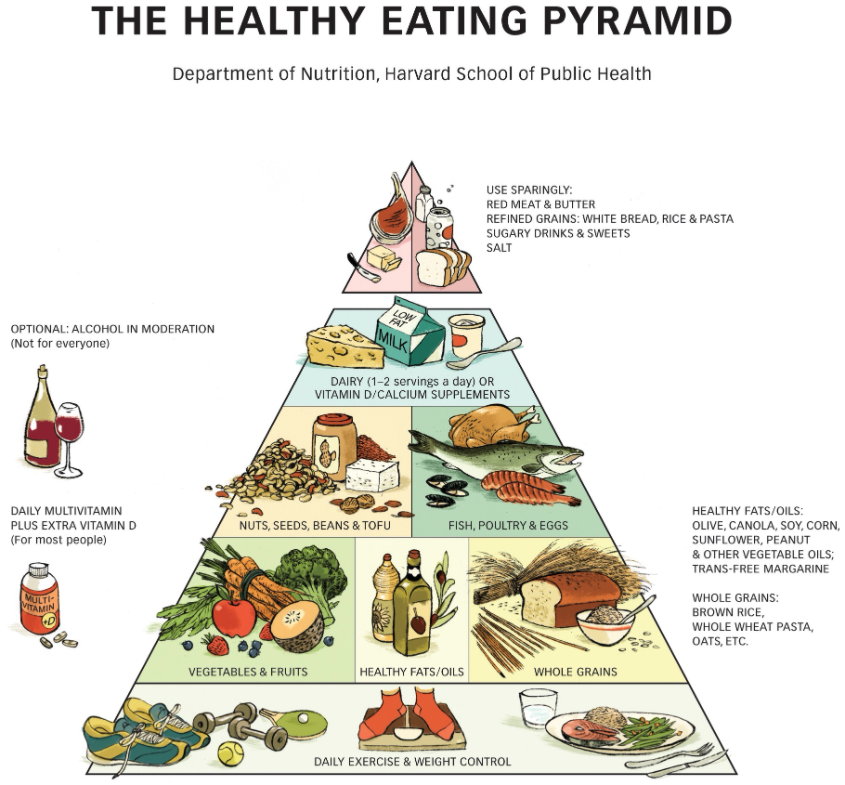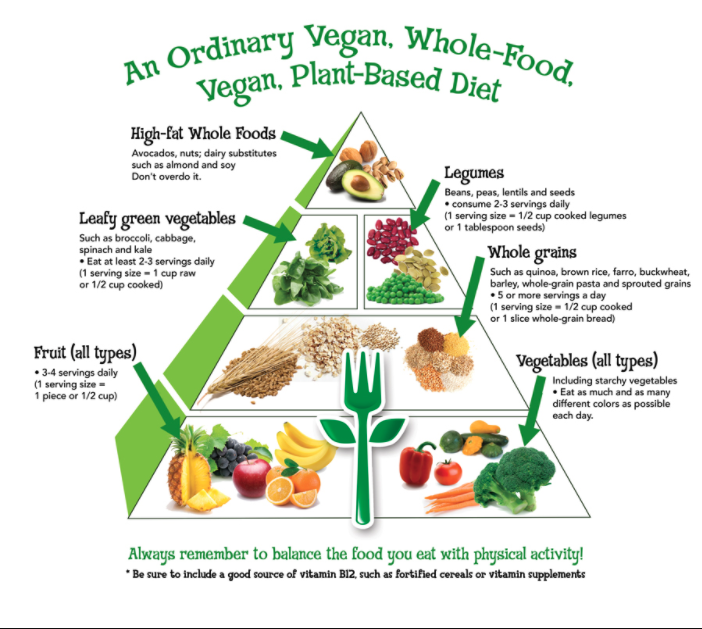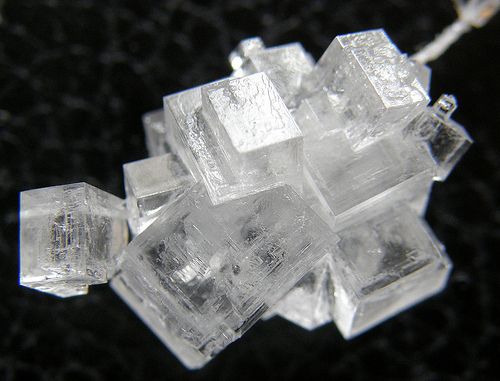Study Guide: Minerals and Life
- Minerals are an essential part of who we are.
- Our evolutionary past determines which minerals we need today.
- Essential minerals are needed for us to live, grow, and remain healthy.
- Essential minerals can be divided into two groups, both of which are equally essential:
- Macrominerals are needed in relatively larger quantities.
- Microminerals (or Trace Minerals) are needed in small quantities of less than 100 mg.
- A balanced diet can provide us with all of the essential minerals we need.
- Essential Minerals: The minerals needed for our bodies to develop and maintain good health.
- Macrominerals: Mineral required in our diet in relatively large amounts, such as calcium, iron, magnesium, phosphorus, potassium, and zinc.
- Microminerals: Mineral required in our diet in relatively small amounts of less than 100 mg, such as iron, zinc, copper, iodine, fluoride, chromium, cobalt, selenium, manganese, and molybdenum
- Metabolism: All the chemical processes that go on continuously inside your body to keep you alive and your organs functioning normally, such as breathing, repairing cells and digesting food. These chemical processes require energy.
- US RDA (United States Recommended Daily Allowance): The average daily allowance of nutrients needed by healthy people.
We Eat Minerals
Besides good water, we must eat many essential minerals (also known as rocks) to remain healthy.
Other than salt, we don’t eat too many minerals straight out of the ground. Most are first absorbed by plants. We eat the minerals by eating plants grown in mineral-rich soil, or by eating other animals who have themselves eaten plants. Important minerals are also found in the water we drink.
We Are Minerals
Minerals exist in every part of our bodies. Four elements—oxygen, carbon, hydrogen, and nitrogen—combine with other elements to make up 96% of our weight. All the remaining elements are minerals, which equal 4% of our total weight. These minerals are essential for good health.
A Balanced Diet
A well-balanced diet supplies all the minerals our bodies need to grow, work, and fight disease. When our diet is out of balance, we become susceptible to disease, infection, fatigue, depression and low energy.
Young people who are still growing, and who don’t get enough healthy food can face lifelong problems. According to the Center for Science in the Public Interest, four of the top 10 leading causes of death in the United States are directly linked to diet. These diseases are:
- Heart Disease
- Cancer
- Stroke
- Type 2 Diabetes
Eat Your Minerals!
<a href="/img/study/eat_your_minerals.jpg"><img src="/img/study/eat_your_minerals.jpg" width="100%" style=" margin:6px; padding:6px; border-width:0.5px; border-style: solid; border-color: #ddd;"/></a>
Cooking Your Minerals
Most minerals in food occur as salts, which are soluble in water. As water boils, the minerals leach into the water.
Foods should be cooked in as little water as possible, for as short a time as possible—or better yet, food should be steamed.
Cooking liquid should be saved for soups, gravies, and sauces. This improves their flavor as well as retaining important nutrients.
Food Pyramids
Our Favorite Minerals
The most important minerals in our diet are called Essential Minerals. They are grouped into Macrominerals and Microminerals (also called Trace Minerals).
Remember! Trace minerals are also essential! We need less of them ($< 100 \text { mg}$), but this does not mean they are less important!
Ancient Oceans
In May 2017, fossil evidence of the earliest known life on land was found in 3.48-billion-year-old geyserite mineral deposits uncovered in the Pilbara Craton of Western Australia. Scientists believe these early terrestrial lifeforms were bacteria living in hot geysers. These hostile environments similar to the Deep Ocean Trenches we studied earlier.
In May 2019, scientists reported the discovery of a fossilized fungus, named Ourasphaira giraldae, in the Canadian Arctic, that may have grown on land a billion years ago, well before plants were living on land.
Fossil evidence indicates that own ancestors moved onto land relatively recently in the Devonian Period, about $4 \times 10^8 \text{ Ma}$ (400 million years ago).
We carry the ancient oceans with us. Each time a new life form evolves to live on land, it carries within itself mineral evidence of the oceans it left behind. For example, scientists think our own blood contains about the same concentration of salts and other minerals as were in ocean water at the time our ancestors first crawled onto land.
| Symbol | Spoken | Meaning |
|---|---|---|
| ka | kilo annum | thousands of years |
| Ma | mega annum | millions of years |
| Ga | giga annum | billions of years |
Example: “400,000,000 years ago” is equal to 400 Ma.
Essential Macrominerals
Sodium, Chloride, and Potassium
Sodium and chloride are critical life-sustaining minerals, and a required part of the diet. Sodium helps maintain proper blood volume and blood pressure. Most adults require between 1.5 and 3.8 grams of sodium chloride per day.
Low potassium levels can be dangerous, resulting in fatigue, muscle cramps, and abdominal pain. Adults need about 4.7 grams of potassium per day.
- Table salt
- Soy sauce
- Processed foods (Too much!)
- Milk (small amounts)
- Breads
- Vegetables
- Unprocessed meat
Salt and the Incredible Ibex, (3:53)
Calcium
Calcium Carbonate is found naturally in limestone, marble and marine shells. It exists as a white powder or as colorless crystals. Calcium is the most abundant mineral in the body. It is used to build bones and teeth, and also as a messenger in cell signaling. The bones also serve as a calcium reserve in case of dietary deficiency. The US FDA recommends an adult daily allowance of calcium of 1000-1200 mg/day.
- Milk and milk products
- Fish (including canned fish with bones)
- Fortified tofu and fortified soy milk
- Greens (broccoli, mustard greens)
- Legumes (beans)
Phosphorus
Phosphorus is needed for healthy bones and teeth. It is found in every cell of the body, and maintains the proper acid-base balance. The US RDA of phosphorus is 700 mg for adults
- Meat
- Fish
- Poultry
- Eggs
- Milk
- Processed foods (including sodas)
Magnesium
Magnesium supports energy production and helps build strong cells. It is important for strong bones, muscle contraction, nerve transmission, and immune system health.
- Nuts and seeds
- Legumes (beans)
- Leafy, dark green vegetables
- Seafood
- Chocolate
- Artichokes
- “Hard” drinking water
Sulfur
Sulfur is an important component of two amino acids, cysteine and methionine, that are used in most proteins of the body. Proteins are the building blocks of our cells. There is plenty of sulphur in all normal diets.
- Meats
- Poultry
- Fish
- Egg yolk
- Milk
- Legumes (beans)
- Tree nuts
Essential Microminerals
The body needs trace minerals in very small amounts. Note that iron is considered a trace mineral, although the amount needed is somewhat more than for other microminerals.
Iron
Iron is used in red blood cells to carry oxygen to the tissues, and is also a needed for energy.
- Organ meats
- red meats
- fish
- poultry
- shellfish (especially clams)
- egg yolks
- legumes
- dried fruits
- dark, leafy greens
- iron-enriched breads and cereals
- fortified cereals
<a href="/img/study/iron_in_foods.jpg"><img src="/img/study/iron_in_foods.jpg" width="100%" style=" margin:6px; padding:6px; border-width:0.5px; border-style: solid; border-color: #ddd;"/></a>
Zinc
Zinc is needed for making protein. It helps the sense of taste, wound healing, and fetal development.
Zink is found in meat, fish, poultry, leavened whole grains, and vegetables.
<a href="/img/study/peas_in_a_pod.jpg"><img src="/img/study/peas_in_a_pod.jpg" width="100%" style=" margin:6px; padding:6px; border-width:0.5px; border-style: solid; border-color: #ddd;"/></a>
Iodine
Iodine is a critical mineral for the body. It is a component of the thyroid hormone and is required for normal thyroid function. The US and many other countries fortify salt with iodine to prevent deficiencies in the population. Iodine deficiency can cause brain damage, mental retardation, hypothyroidism, goiter, and other health problems. The US RDA of iodine is 150 micrograms.
Selenium
Selenium is an antioxidant, with many metabolic functions. The US RDA for selenium is 55 micrograms. Foods rich in selenium include Brazil nuts, tuna, oysters, pork, beef, chicken, whole wheat bread, and milk. Deficiency of selenium does not usually result in obvious illness.
Copper
Copper helps with energy production, building strong connective tissue, and iron metabolism. The US RDA of copper is 800 micrograms for adults. The US RDA of copper is 800 micrograms for adults.
Manganese
Among other things, Manganese supports bone development, and wound healing. Adequate daily intake of manganese is 2.3 mg for men and 1.8 mg for women. Deficiency of manganese can lead to osteoporosis, diabetes, and epilepsy.
<a href="/img/study/manganese_rich_foods.png"><img src="/img/study/manganese_rich_foods.png" width="100%" style=" margin:6px; padding:6px; border-width:0.5px; border-style: solid; border-color: #ddd;"/></a>
Fluoride
Fluoride hardens tooth enamel and stabilizes the mineral in bones. Natural sources of fluoride include tea, fish consumed with the bones, and some fruit juices. The major source of dietary fluoride in the US is fluoridated drinking water.
Chromium
Works closely with insulin to regulate blood sugar (glucose) levels
Molybdenum
Part of some enzymes
Other trace nutrients known to be essential in tiny amounts include nickel, silicon, vanadium, and cobalt.
The Omnivore’s Dilemma, Chapter One, (5:01)











